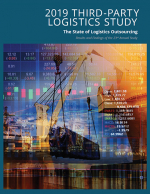A Look Back… Penn State Smeal Supply Chain Program
“When you are through changing, you are through.” Bruce Barton (1886-1967), advertising executive, U.S. Congressman, Presidential advisor.
The history of the supply chain program at Penn State is a history of continuous change—moving from a post-World War II focus on the logistics of transportation, warehousing, and inventory management, to a broadened view incorporating sourcing and distribution, to a holistic vision of supply chain as an end-toend collaborative enterprise.
The capstone course in supply chain studies used to be network design and strategy, focusing on the number, location, and linkages of fixed facilities. Today, the big strategic issues are supply chain transformation, leadership, sustainability, and innovation.
The trajectory of supply chain research and studies at Penn State has mirrored the movement in industry from the marketing model of “product, price, promotion, and place” to the perception of supply chain as a strategic competency. This change in thinking among corporate executives has led to increased collaboration with suppliers, in turn leading to greater emphasis on quality, more innovative product design, and increased cost savings and revenues. Now when a product is designed, executives think about the entire supply chain, from collaborating with raw materials suppliers to communicating with the customer.
Today’s CEOs see effective supply chain management as the key to keeping a competitive edge, and they know that even with the best processes in place, competitive edge also depends on the intangibles, such as a workforce with the talent, drive, and passion for continuous learning. The demand for top-notch supply chain professionals has grown tremendously, and many companies look to Penn State to help with the current talent gap.
As one industry professional notes, “When Penn State graduates work in industry, seeing firsthand the impact of supply chain on information flow and cash flow, they are adept at understanding and adapting to change.”
What’s Related


Favorites





